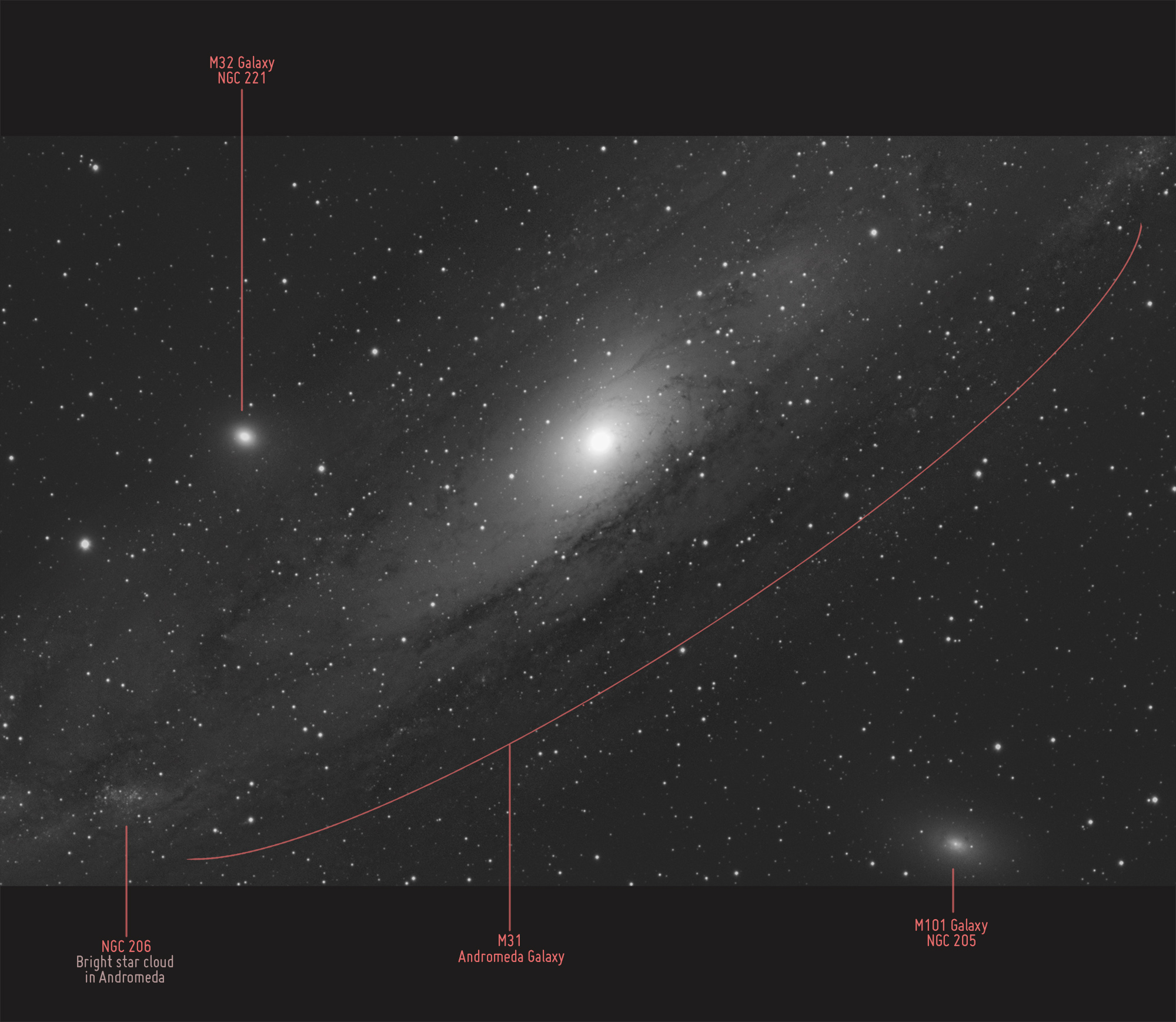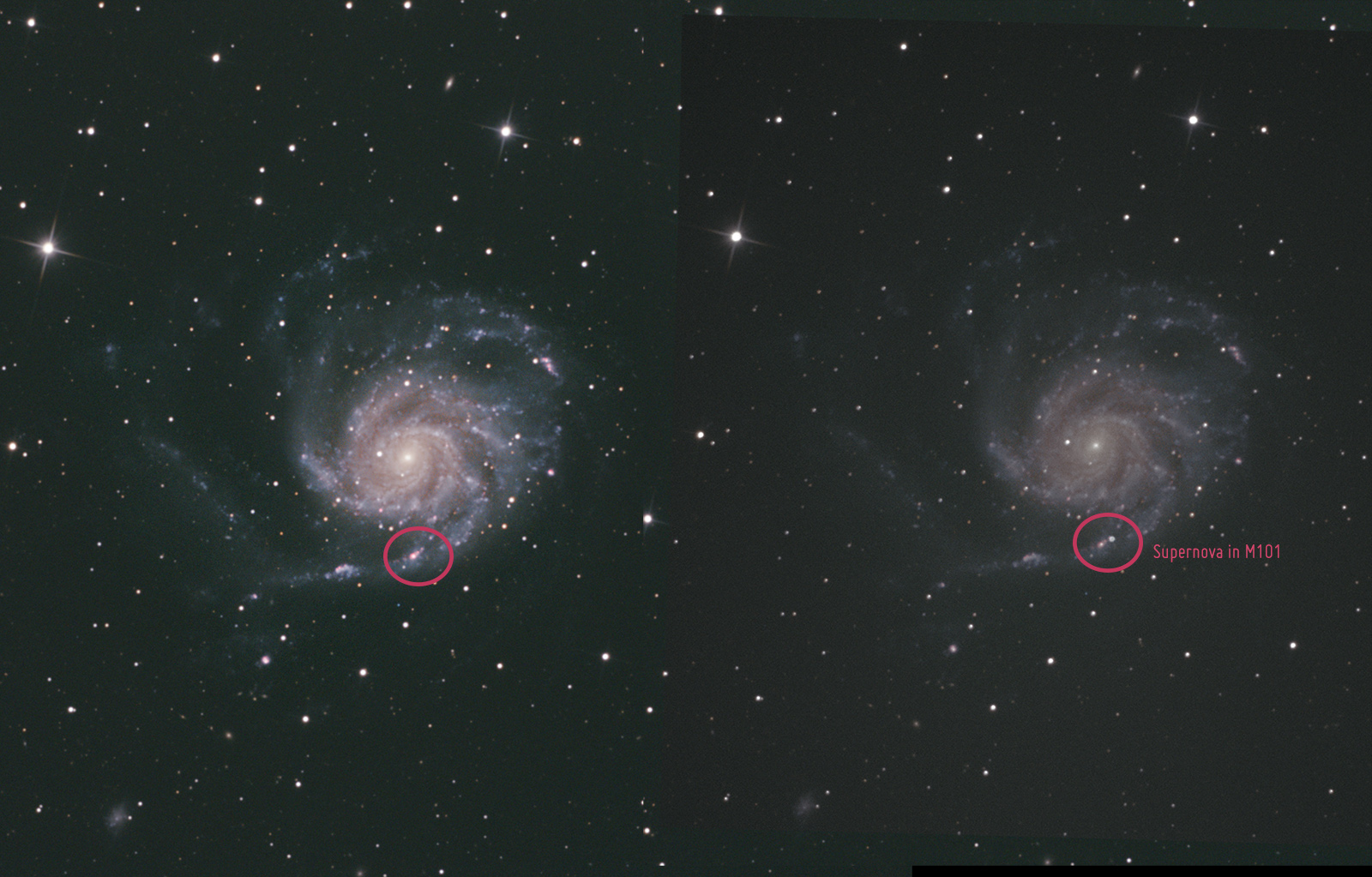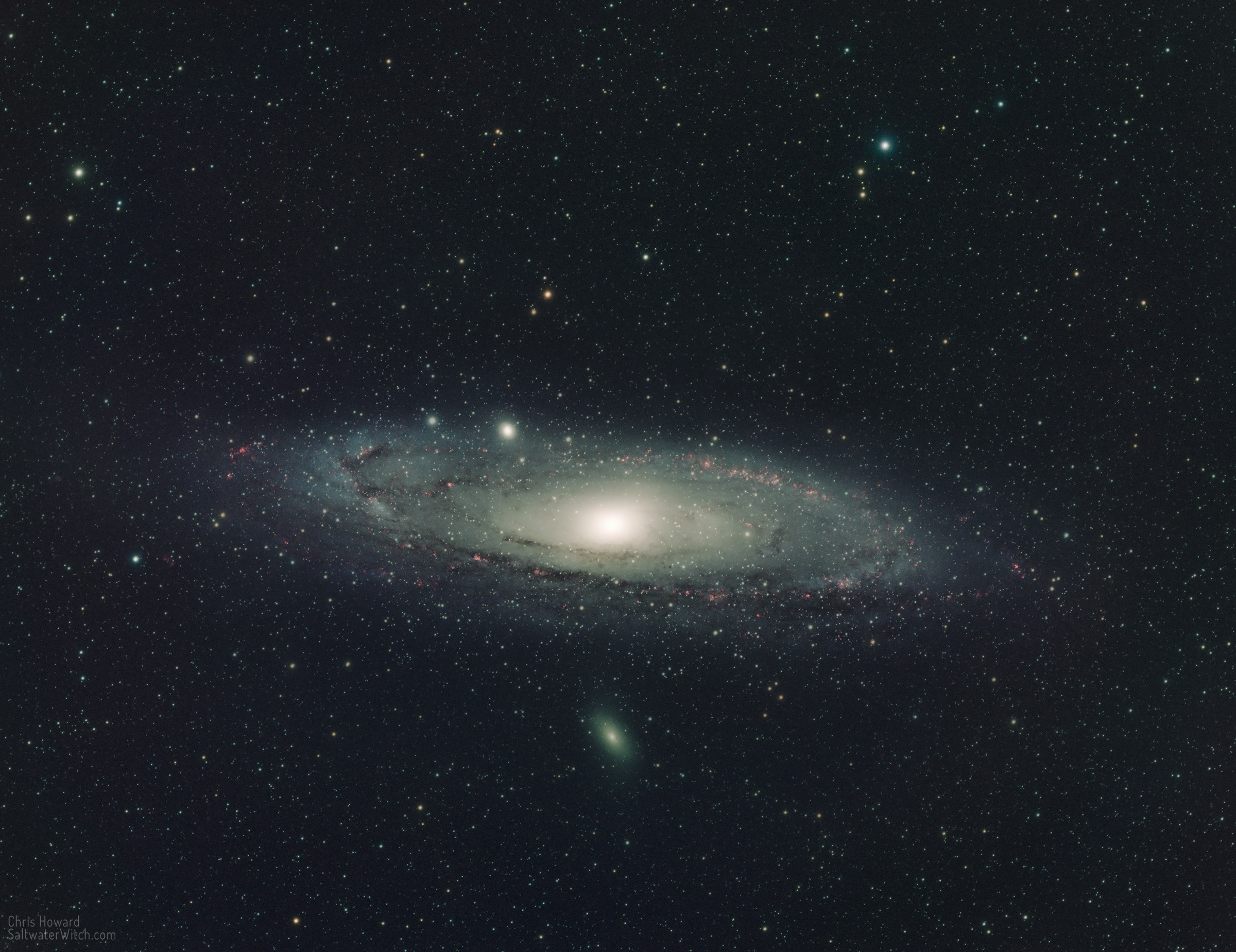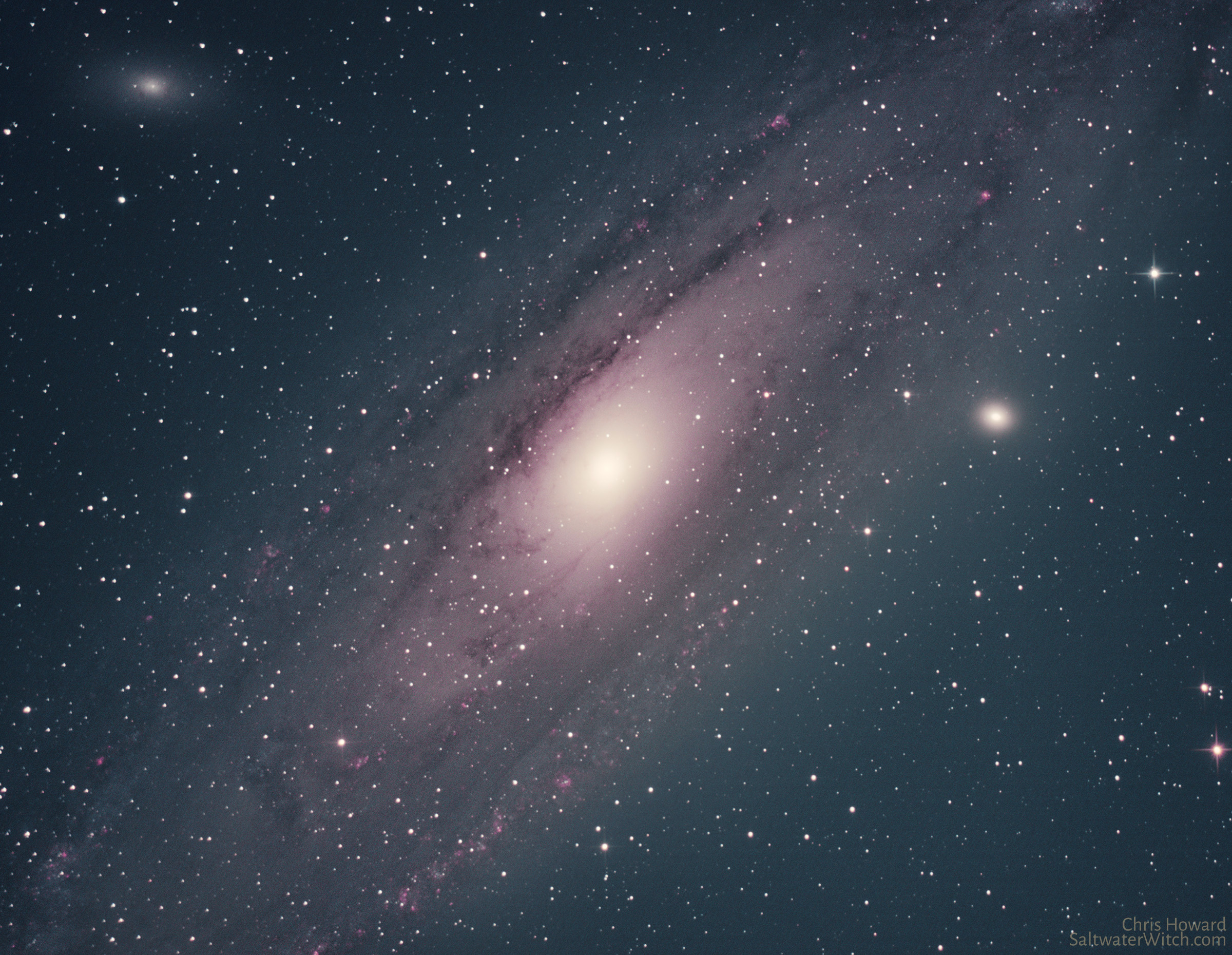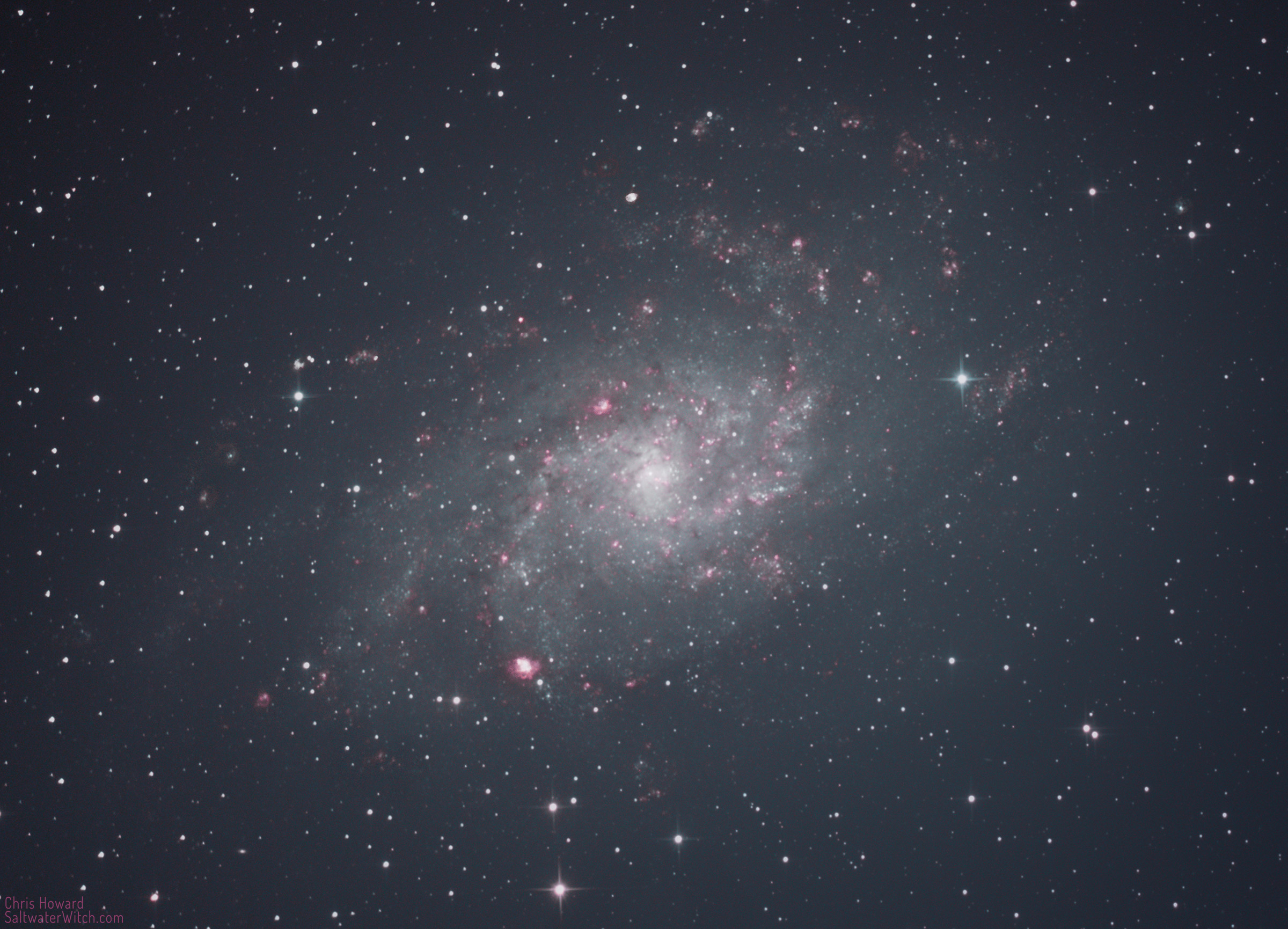Galaxies in Ursa Major
A wide-field view of Bode's Galaxy (M81, NGC 3031) and the Cigar Galaxy (M82, NGC 3034) about 12-million lightyears away in Ursa Major (the "Big Dipper"). There are a bunch of other galaxies in this view, including NGC 3077 and NGC 2976. The clouds and interstellar dust are in our galaxy and are lit by the surrounding starlight. Imaging Notes: 73 x 300-second sub-exposures taken with the William Optics Redcat51 apochromatic refractor, ZWO ASI071MC color camera cooled to 0°C at Gain 0.

Posted December 19, 2023
Supernova in M101
On May 19th, 2023--three days ago, Japanese astronomer Koichi Itagaki discovered a supernova in M101 galaxy, 21 million lightyears away. I shot M101 last week, and tonight I took one exposure in Hydrogen-alpha (narrowband) and overlaid the images. That bright dot circled on the right is SN 2023ixf, the new supernova.
Posted May 22, 2023
M101 in Ursa Major
From my Sunday night astro imaging run: the Pinwheel Galaxy (M101, NGC 5457) is 21 million lightyears away in the constellation Ursa Major. It's quite a bit bigger than our own galaxy: a 170,000 lightyear diameter and a trillion stars. We're looking 21 million years back in time on this beautiful galaxy, tilted perfectly, face-on (or top-down?) from our perspective in the Milky Way, so that we can clearly see its spiral form, twisting dust lanes, HII regions, and other detailed structures. Space is big. And it takes that long for the light of a trillion suns to reach us from this distant galaxy. Imaging notes: about 6 hours of data, 70 x 300-second exposures with the ZWO ASI071 color camera cooled to -10C, UV/IR Cut filter, 800mm f/4 newtonian scope. With a 28.8 arc-minute apparent size, M101 is about the limit for deep sky targets with the 800mm focal length scope.
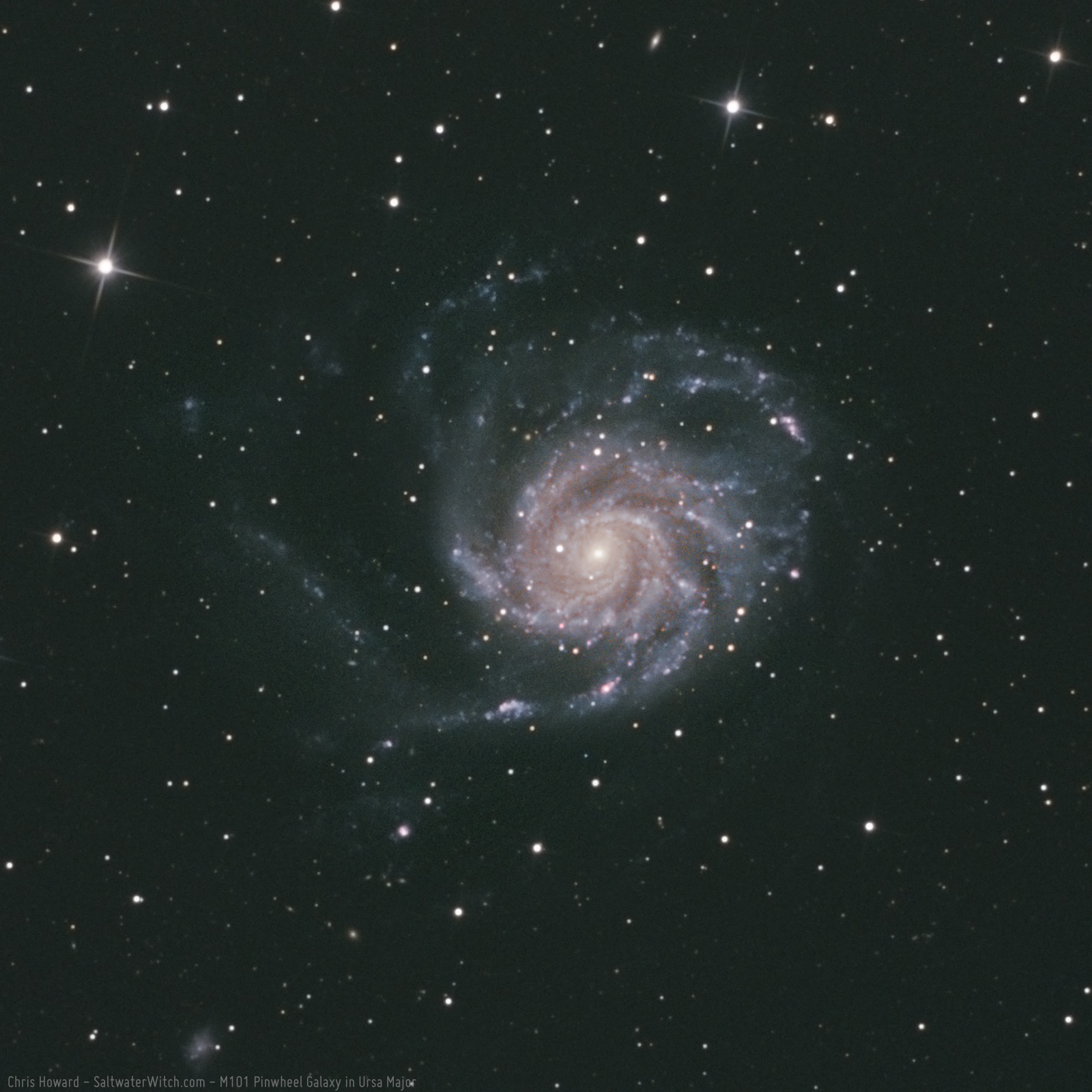
And here's the full image of M101, the Pinwheel Galaxy, slightly cropped to remove dithering artifacts at the top and side. What's crazy is there are at least a dozen other galaxies in this frame, most of them many more millions of lightyears distant than M101. All of the actual stars in this frame are within our own galaxy, the Milky Way. Everything else is another galaxy millions of lightyears away.

Posted May 15, 2023
M31 in HaRGB
Beautiful skies last night, mostly clear, and no moon, the perfect night for broadband color with separate RGB filters, and I went after one of the finest northern hemisphere color targets. Andromeda (M31) is one of our galactic neighbors at only 2.5 million lightyears away. Our own galaxy, the Milky Way, may have as many as 400 billion suns, while Andromeda may have as many as a trillion suns. M31 is about 152,000 light-years across, and the Milky way is a bit under 90,000 lightyears. We're both good-sized barred spiral galaxies. Stick around for a few billion years and you can watch us collide and form one massive galaxy. Notes: 51 x 120-sec Red, 53 x 120-sec Green, and 56 x 120-second Blue filter (Astronomik Deep Sky RGB filters), 60 x 180-second Hydrogen-alpha (Astronomik 6nm), ZWO ASI1600MM-Pro monochrome camera running at -10C, ZWO AM5 EQ mount, William Optics SpaceCat 51 apochromatic refractor.
The Milky Way and Andromeda are two of the largest members of the Local Group, which contains about 80 galaxies, most of which are dwarf galaxies with something like 10 billion stars or fewer. M110 (below) and M32 (above) are satellite galaxies of Andromeda, and both are dwarf galaxies in the Local Group. Most of these dwarf galaxies don't have much of an internal structure, no dust lanes, very little star formation. (M110 is an exception, in that there are remnants of a spiral of interstellar dust and there's ongoing research looking at M110's origins and development). Andromeda may contain a trillion solar masses and the Milky Way galaxy contains around 400 billion solar masses—give or take a few billion. From our perspective along the Orion-Cygnus Arm (sometimes called the "Local Arm") of the Milky Way, the Andromeda Galaxy is at an angle, tipping toward us, inclined around 77° relative to Earth. I believe the edge of M31 with M110 (bottom in this rotation) is the side closest to us. One of the notable catalogued regions within the galaxy is NGC 206 (bright bar on the lower left side), a star forming region with hundreds of relatively new spectral class O and B stars. These hot blue-giant stars are so bright and massive we can resolve them from our galaxy with consumer telescopes.
Posted September 25, 2022
M31 and M33
I used the Optolong L-eXtreme for half of the exposures, filtering out everything except 7nm lines along hydrogen-alpha and oxygen 3, and then switched to full broadband, just the UV/IR Cut Filter. Notes: 8" 800mm f/4 Newtonian and the ZWO ASI071MC cooled color camera.
I'm not really a galaxy guy, more of a nebula guy, mainly because I don't have a scope over 1350mm, which is just long enough to get a handful of nearby galaxies. So, for now, I usually capture a couple of our galactic neighbors when they swing around this time of year--and if the moon and clear night skies line up for broadband color imaging!
The central region of M31, Andromeda Galaxy:
The Triangulum Galaxy from my backyard--it's only 2.73 million light-years from Earth! I've said it before. Once we develop MFTL technology (Much Faster Than Light) and we have the ability to hop to nearby galaxies, count me in on a trip to M33, the Triangulum Galaxy. The chunky pinkish masses are vast regions of interstellar ionized hydrogen that make up the nebulae in M33, perfect for an astrophotography outing. Until then, maybe we can take a trip to the southern hemisphere? Notes: Apertura 8" Newtonian OTA--800mm at f/4, ZWO ASI071MC cooled color camera. Optolong L-eXtreme dual narrowband filter. 48 x 240-second exposures stacked in DSS.
Posted September 4, 2022
Triangulum Galaxy, Picking Favorites
M33, the Triangulum Galaxy in Ha+RGBColor with the SpaceCat51 and ZWO ASI071MC cooled color camera + Atik 414EX monochrome camera. I processed some 2018 and 2019 data to see what kind of detail I can get out NGC 604--that's the large pink mass at the middle bottom of the galaxy in this rotation. NGC 604 is a vast HII region, much brighter and 40 times larger than the Orion Nebula in our galaxy. M33 is a little under 3 million lightyears away.
Andromeda (M31) was the first deep sky object I captured with a camera--an old Nikon D40x DSLR. The Orion Nebula (M42) was the second. For many years M31 was my favorite galaxy and it is in many ways the ideal galaxy; it's a massive spiral at the perfect photographic angle from our perspective, here in the middle of our own galaxy. At two and a half million lightyears, it's not far away. And while M101, the Pinwheel Galaxy, is perfect from a galactic structure point of view, being a face-on from our perspective (or top down), Andromeda is cinematically posed for all of us taking pictures from earth. Galaxies are not really my thing. I usually focus on narrowband imaging of nebulae, supernova remnants, and other large structures within the Milky Way--so, thousands of lightyears away, not millions. I almost always shoot with sub-1000mm focal lengths, and galaxy imagers are usually running with 2000mm or more. OTAs of 3000mm and up are common.
Andromeda is certainly one of my favorites, but I think the Triangulum Galaxy (Messier 33, M33, NGC 598) in the constellation Triangulum is my favorite northern hemisphere galaxy. It's kind of chunky with vast HII regions (the pink structures scattered along the spiral arms). It gets a little thin out toward the edges; not the smooth plane of stars you see in the Andromeda galaxy. It's made up of 40 billion stars rather than the trillion or so in Andromeda. M33 is another galactic neighbor and close enough to capture with medium focal lengths.
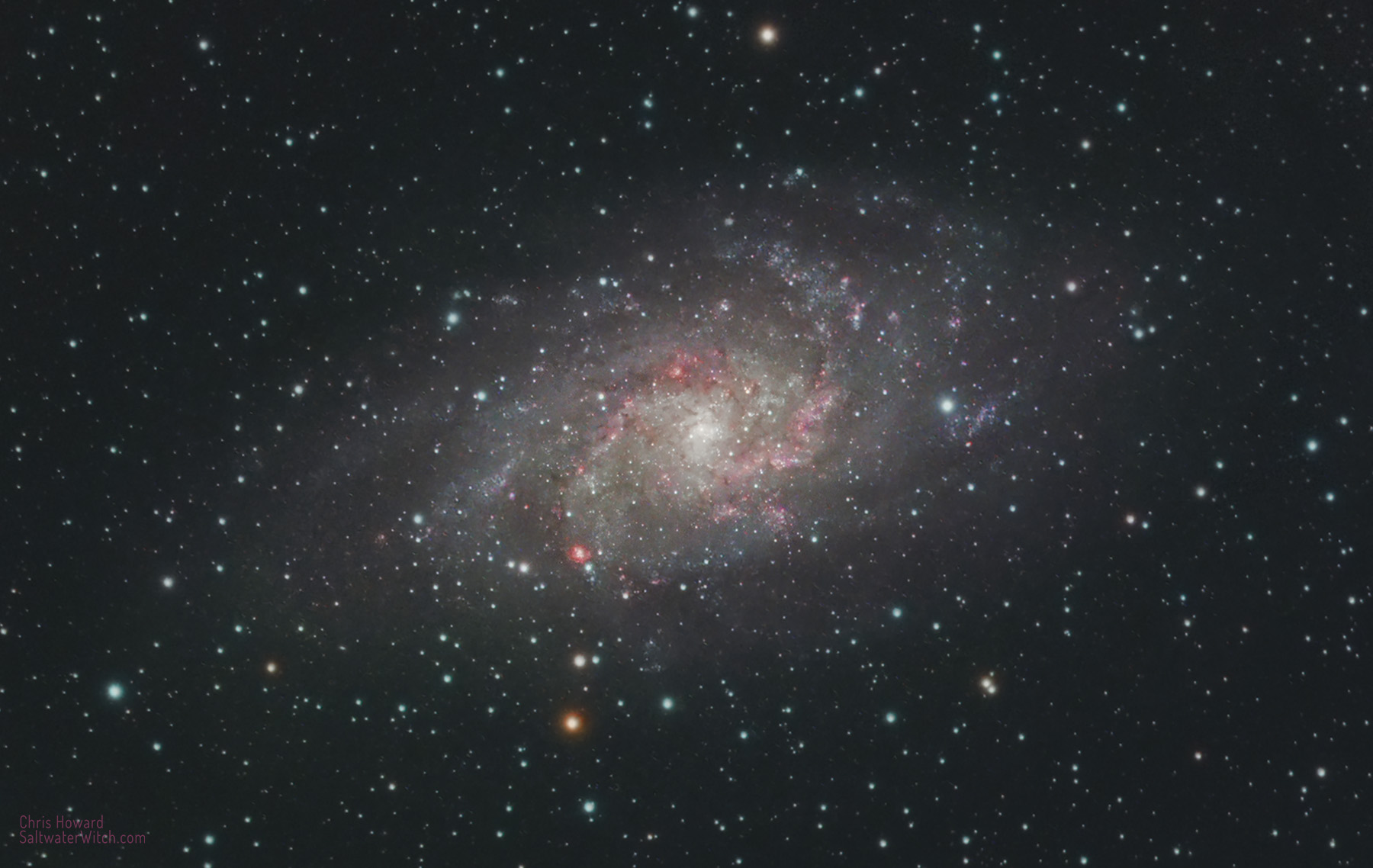
Posted May 9, 2022
M31, Andromeda Galaxy
Another one from last night's imaging run--finished up last night, with 34 subs from November 1st: Our largest galactic neighbor, Andromeda, with the William Optics SpaceCat 51 refractor and the ZWO ASI071MC cooled color camera.
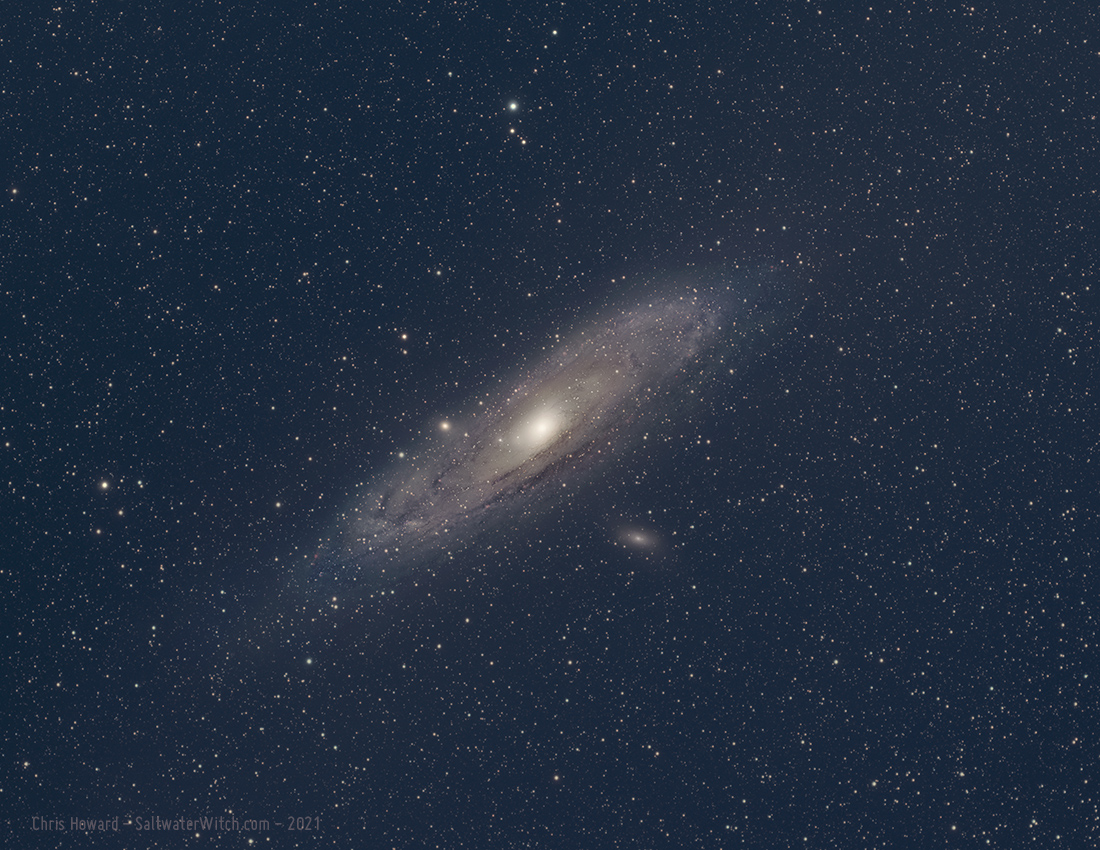
Posted November 4, 2021
M31 in BLUE
This is the blue bandpass of the Andromeda Galaxy (M31), revealing dense spirals of dust that wind through starfields and curl around the galactic core. I have labeled NGC 206, one of the brightest of the star clouds inside Andromeda, along with a couple of M31's captive galaxies (M32 and M101). Imaging Notes: 51 x 120-second stacked subs from my WilliamOptics SpaceCat51 (250mm FL) and ZWO ASi1600MM-Pro mono camera.
